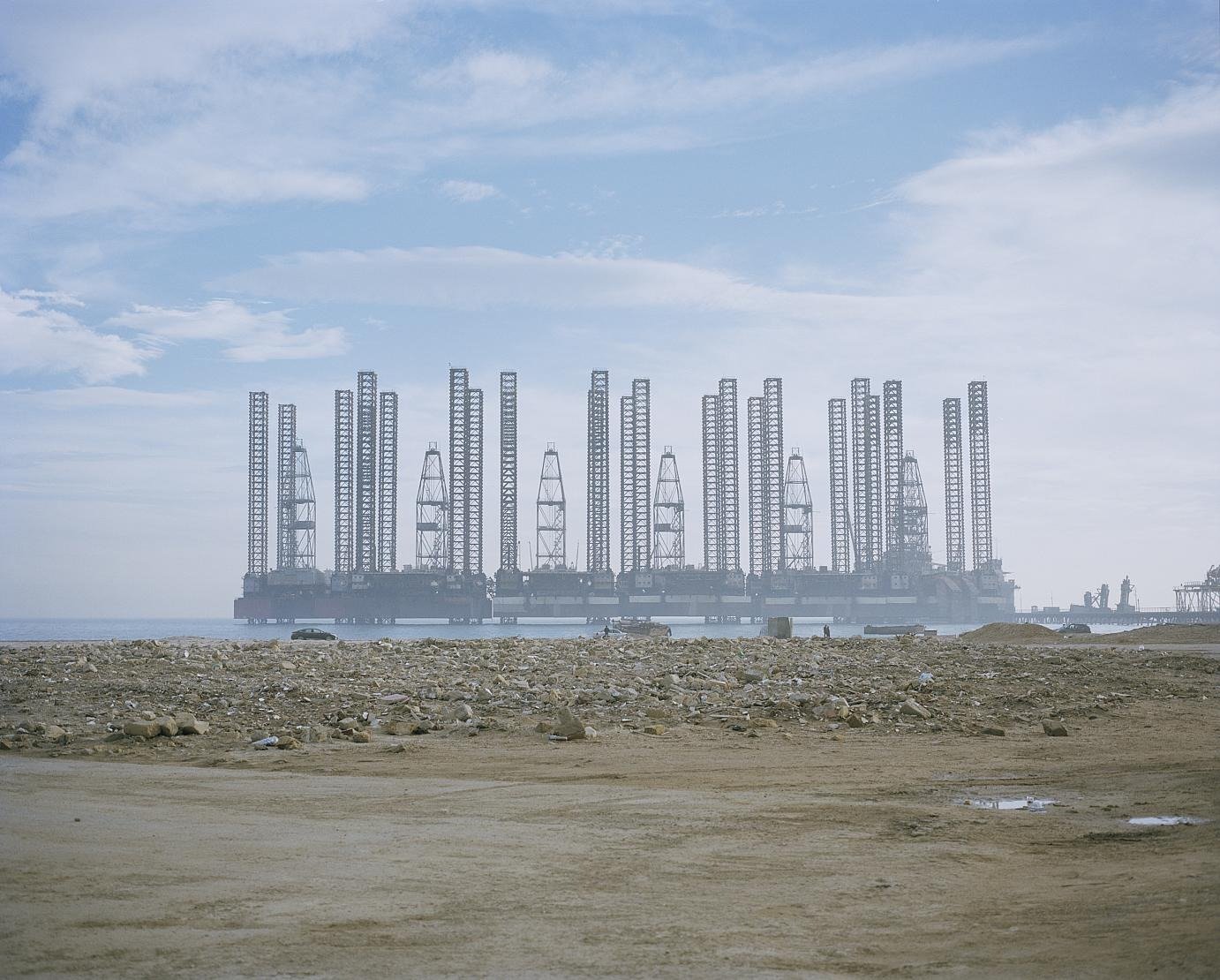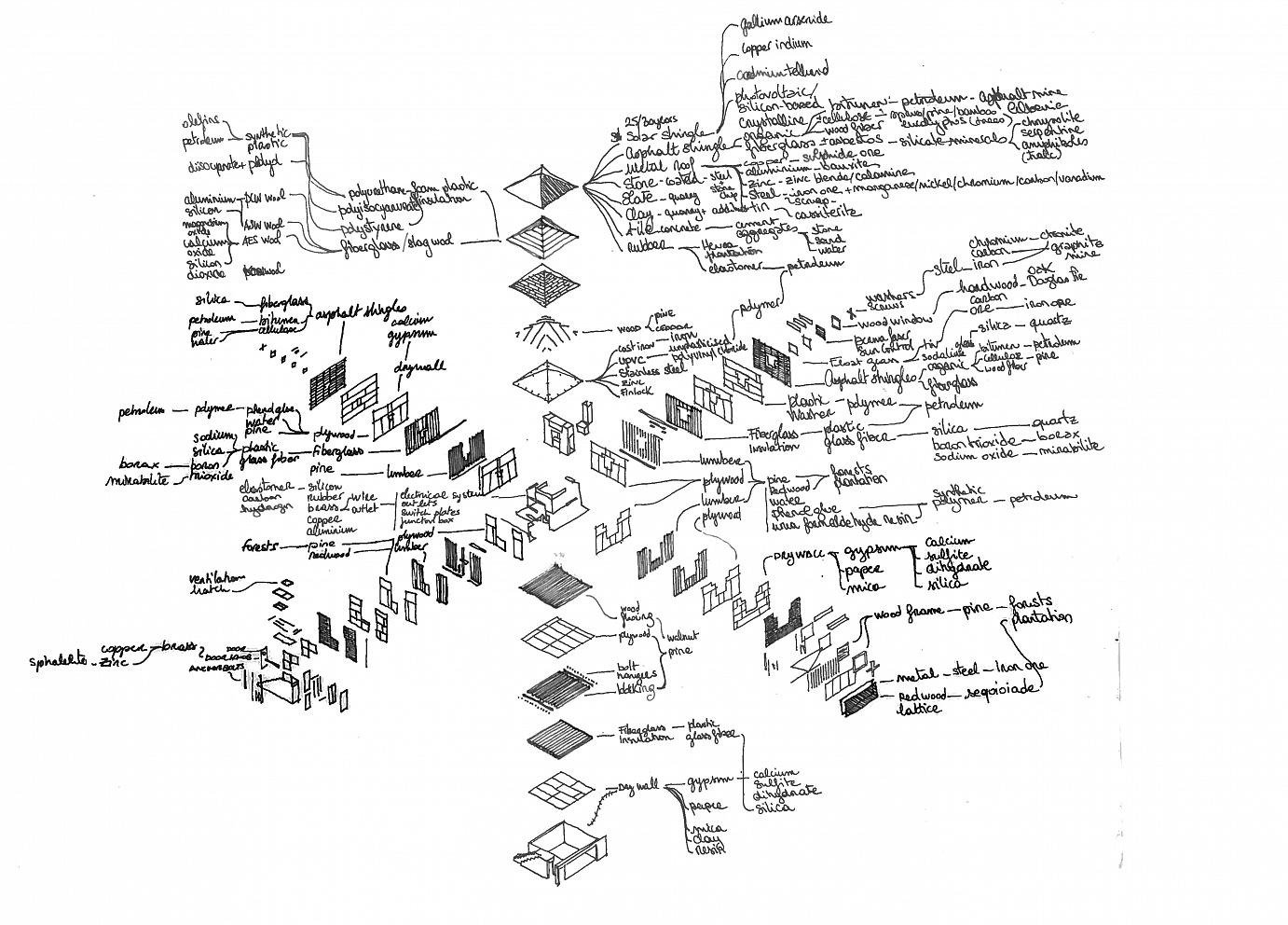Non-Extractive Architecture
Non-Extractive Architecture: On Designing without Depletion Vol.1 Edited by Space Caviar, published by V-A-C and Sternberg Press.
Non-Extractive Architecture: On Designing without Depletion Vol. 1 establishes a theoretical framework for a new approach to architecture - one based on long-term thinking, material resources and their subsequent landscapes, and the integration of community values into the construction industry. Through a series of essays by architects, geographers, historians, economists, urbanists, and philosophers, Non-Extractive Architecture: On Designing without Depletion Vol.1 explores whether an alternative paradigm in design is possible, and what values it might be founded on.
Moving cloud, Aosta, Italy, 2000. Armin Linke. Phenomenology of Extractivism, Non-Extractive Architecture: On Designing without Depletion Vol.1
Oil platforms, Baku, Azerbaijan, 2015. Armin Linke. Phenomenology of Extractivism, Non-Extractive Architecture: On Designing without Depletion Vol.1
As the true urgency of the environmental crises we face becomes clear, architecture requires fundamental reinvention. The assumption that the building industry can only fulfill humanity’s needs with the irreversible exploitation of the environment, of people, and of the future - needs to be reconsidered.
Charlotte Malterre-Barthes, Scales of Extraction, after Morphosis, 2-4-6-8 House Parts drawing. Non-Extractive Architecture: On Designing without Depletion Vol.1
Could architecture be understood as the practice of guardianship of the environment, both physical and social, rather than an agent of depletion? Could the role of the architect deal less with form and more with integration, circularity, reuse, material research, and community building? Could supply chains be made shorter, and could buildings be more closely tied to the economies in which they exist? What are the models and metrics that such a paradigm could adopt?
Luke Jones, notional carbon flows between a timber building and forest. Non-Extractive Architecture: On Designing without Depletion Vol.1
Edited by Space Caviar with an introduction by Joseph Grima and contributions by Dele Adeyemo, Benjamin Bratton, Stephanie Carlisle, Emanuele Coccia, Keller Easterling, Swarnabh Ghosh, Macarena Gómez-Barris, Phineas Harper, Elsa Hoover, Jane Hutton, Interiors Agency, Elisa Iturbe, Luke Jones, Chiara Di Leone, Armin Linke, Charlotte Malterre-Barthes, Nicholas Pevzner, Maria Smith and Mark Wigley.
Space Caviar
Space Caviar is an architecture and research studio operating at the intersection of design, technology, spatial practice and the public realm. Founded in 2013, the office uses built work, exhibitions, publishing, writing, and film to investigate and document contemporary modes of habitation, design, and the spatialization of social and political practice.
Contributions by Dele Adeyemo, Benjamin Bratton, Stephanie Carlisle, Emanuele Coccia, Keller Easterling, Swarnabh Ghosh, Macarena Gómez-Barris, Phineas Harper, Elsa Hoover, Jane Hutton, Interiors Agency, Elisa Iturbe, Luke Jones, Chiara Di Leone, Armin Linke, Charlotte Malterre-Barthes, Nicholas Pevzner, Maria Smith and Mark Wigley.









